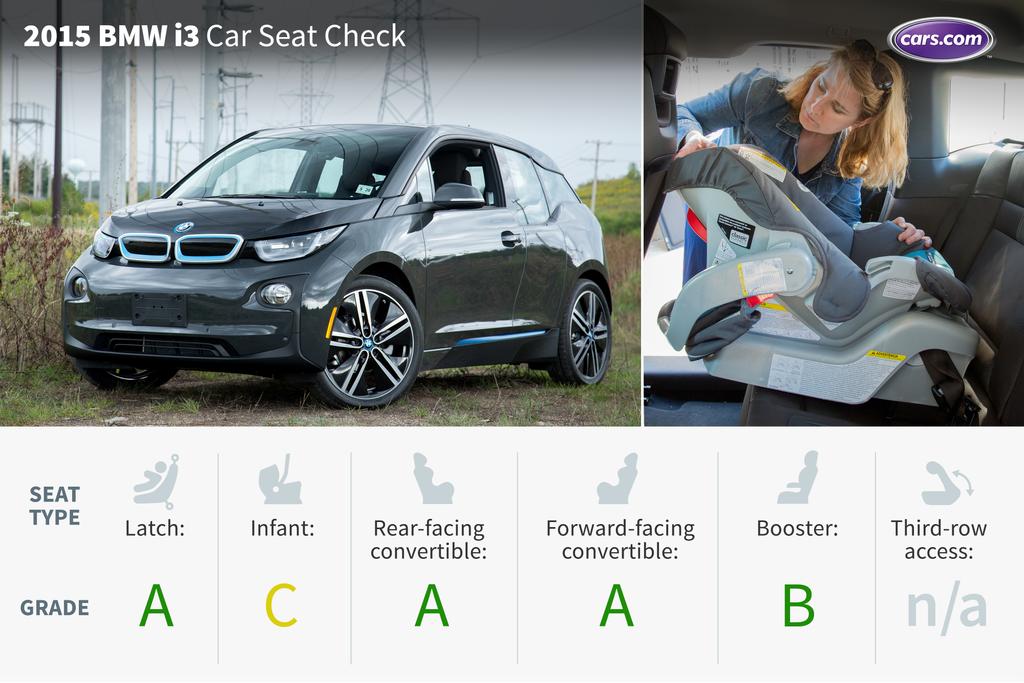
When it comes to pulling family duty, the 2015 BMW i3 performs relatively well. The four-passenger i3 electric car, which can be had with an optional two-cylinder gas engine for those who suffer from range anxiety, certainly did better in its Car Seat Check than its low-slung sibling, the i8. We liked the i3's rear-hinged rear doors, which made it easy to install our car seats. The doors were also a hit with my 8-year-old who thought they were cool, but he struggled to maneuver them because they're heavy. These doors could be a problem for families with school-aged kids when it comes to the carpool lane. The driver or front passenger will have to open their door to let the rear passenger open his door, which would slow down dropoff and pickup at the kiss-n-go lane at school.
How many car seats fit in the second row? Two
What We Like
- There are two sets of lower Latch anchors in the i3's two-passenger backseat. The anchors sit about an inch behind hinged plastic covers. The tether anchors are near the top of the rear seatbacks. They're well marked and easy to use.
- Lengthwise, the rear-facing convertible fits well in the i3, with no need to move the front passenger seat forward to accommodate it. The rear seats' bottom cushions angle into the seat bight, where the back and bottom cushions meet, so parents may need to use a rolled towel or pool noodle to ensure the seat is installed at the correct angle.
- After removing the head restraint, the forward-facing convertible fit well in the i3.
- The high-back booster seat installed easily into the i3's lightly bolstered rear seat. We didn't need to raise or remove the head restraint to fit the booster seat.
What We Don't
- To fit the rear-facing infant seat behind the front passenger seat, we had to move the front seat forward significantly. This caused our 5-foot-6 tester's knees to be pushed into the glove box, which is unsafe. The rear seat's short bottom cushion meant that our infant seat's base hung over the edge of the seat cushion. Parents should check that at least 80 percent of a car seat is on the cushion.
- The rear seat belt buckles are on stable bases, but the center of the rear bench is raised slightly to hold the backseat's cupholders. This design creates a small pocket for the buckle's base, which could make the buckles difficult for younger kids to grasp and use.
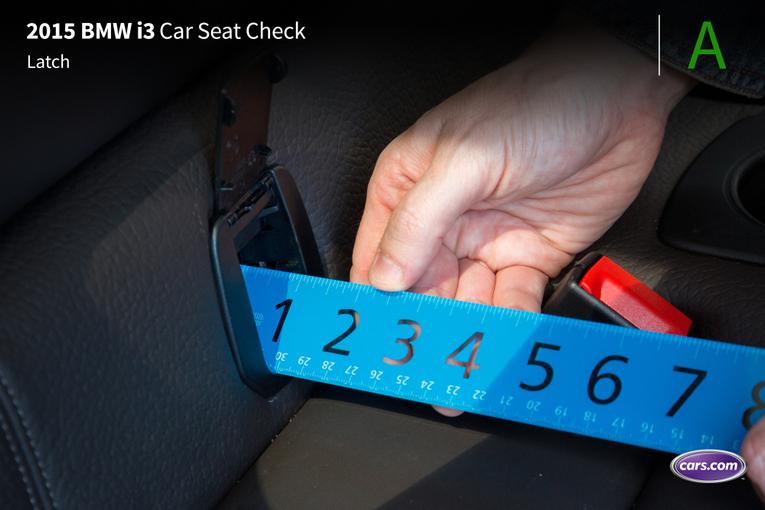
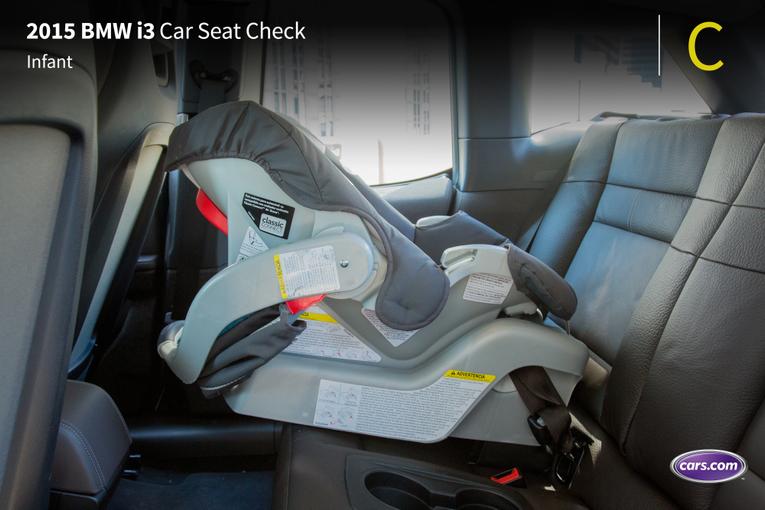
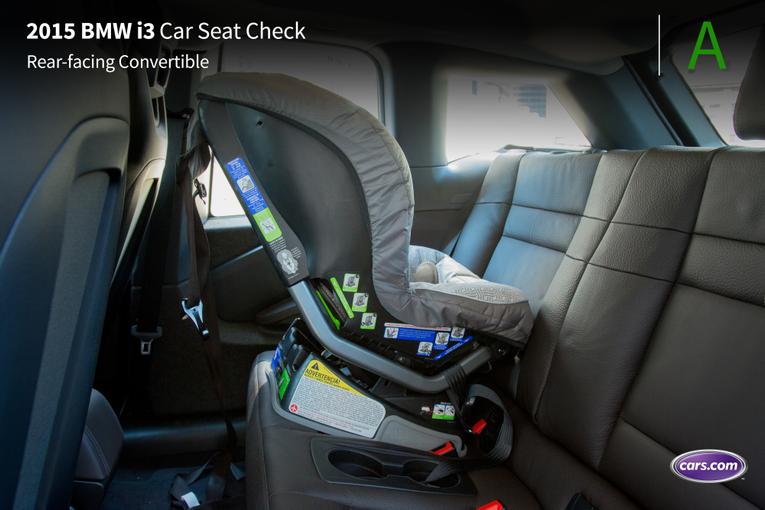
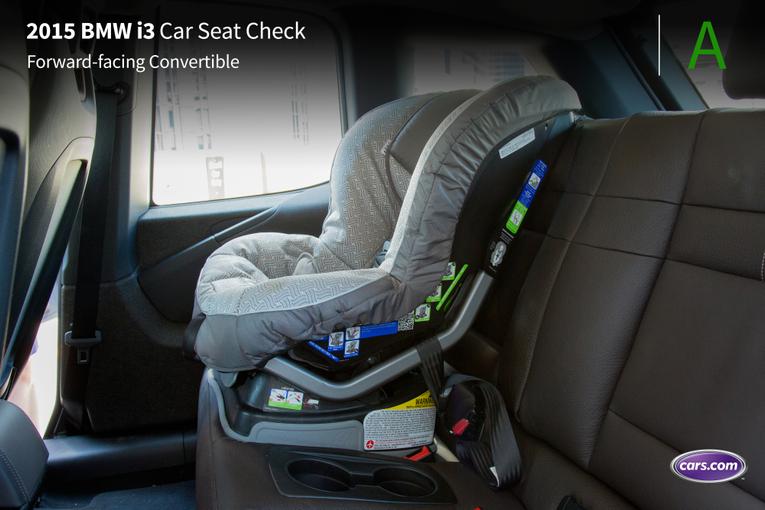
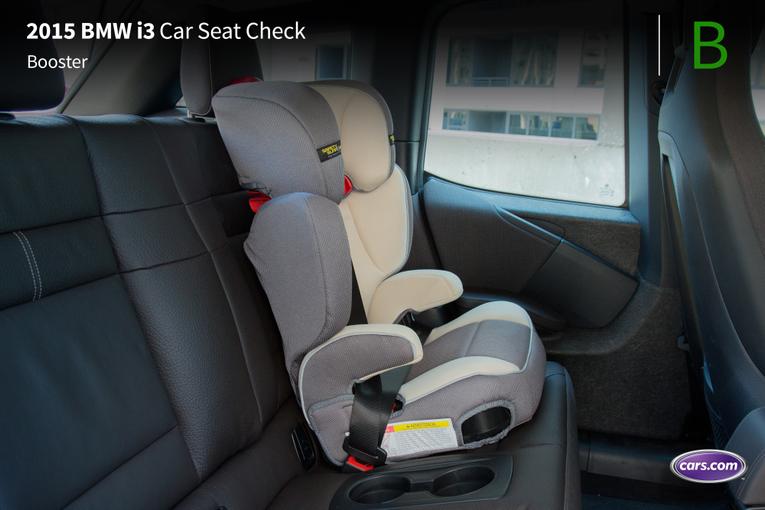
Grading Scale
A: Plenty of room for the car seat and the child; doesn't impact driver or front-passenger legroom. Easy to find and connect to Latch and tether anchors. No fit issues involving head restraint or seat contouring. Easy access to the third row.
B: Plenty of room. One fit or connection issue. Some problems accessing third row when available.
C: Marginal room. Two fit or connection issues. Difficult to access third row when available.
D: Insufficient room. Two or more fit or connection issues.
F: Does not fit or is unsafe.
About Cars.com's Car Seat Checks
Editors Jennifer Geiger and Jennifer Newman are certified child safety seat installation technicians.
For the Car Seat Check, we use a Graco SnugRide Classic Connect 30 infant-safety seat, a Britax Marathon convertible seat and Graco TurboBooster seat. The front seats are adjusted for a 6-foot driver and a 5-foot-8 passenger. The three child seats are installed in the second row. The booster seat sits behind the driver's seat, and the infant and convertible seats are installed behind the front passenger seat.
We also install the forward-facing convertible in the second row's middle seat with the booster and infant seat in the outboard seats to see if three car seats will fit; a child sitting in the booster seat must be able to reach the seat belt buckle. If there's a third row, we install the booster seat and a forward-facing convertible. To learn more about how we conduct our Car Seat Checks, go here.
Parents should also remember that they can use the Latch system or a seat belt to install a car seat, and that Latch anchors have a weight limit of 65 pounds, including the weight of the child and the weight of the seat itself.
No comments:
Post a Comment